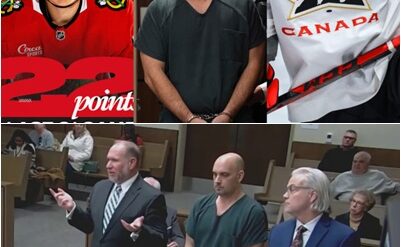Nearly a decade on, Swift’s full-on pop crossover moment remains a career high-point
Taylor Swift’s journey to re-record her first six albums has been a nostalgia trip through the eras. The pop icon’s first three ‘Taylor’s Version’ re-releases – 2008’s ‘Fearless’, 2010’s ‘Speak Now’ and 2012’s ‘Red’ – revisited the turbulence of young adulthood, reflecting on the ache of infatuation and the fogginess of heartbreak with new perspective, while still honouring the validity of those youthful emotions. For fans, it’s been a chance to both revisit the zeitgeist the albums captured and celebrate the pop star regaining control of her master recordings – all the while hoping they’ll retain the micro-level idiosyncrasies that made them so potent. No wonder ‘The Eras Tour‘ – a career-spanning jaunt that continually smashes records – has proven so successful.

So far, the ‘Taylor’s Version’ albums have been tightened up with crisper instrumentals and cleaner production. Swift’s voice has understandably matured and her country lilt has soothed, meaning some lyrics are recited with a touch more wisdom or a knowing wink from the other side of heartbreak, rather than the rawness she first recorded them with. It is an undeniably fascinating exercise.
When it came to releasing ‘1989’ exactly nine years ago, Swift decided she was done treading the line between country and pop, and instead dove head first into pop star-sized anthems with the help of powerhouse producers like Max Martin, Jack Antonoff and Imogen Heap. As some critics continued to dismiss Swift as a twee country darling, ‘1989’ made people sit up and take notice as she laid out her plans for pop domination. After losing out on Album of the Year for ‘Red’ at the 2014 Grammys, ‘1989’ won two years later, scooping three awards total that night.
Despite being billed as an ‘80s-inspired synth-pop record, ‘1989’ also forged an identity that was an evolution of Swift’s own sound rather than kitschy pastiche of her retro influences. “I woke up not wanting but needing to make a new style of music,” she shared in a livestream at the time.
Then she unveiled ‘Shake It Off’, the catchiest track of her career with an abundance of infectiously singable hooks. ‘1989 (Taylor’s Version)’ is full of these deliciously polished belters that still feel brand new nearly a decade later, from ‘Blank Space’ (“‘Cause you know I love the players / And you love the game”) to the sizzling key change in ‘Style’ (“You got that James Dean daydream look in your eye”). Along with the bubbling excitement of changes and new beginnings, ‘1989’ also featured Swift’s bolshiest move yet. The seething ‘Bad Blood’, about a not-so-secret feud with a fellow female pop star – for which Swift recruited an all-star entourage in the music video – rumbled the fabric of our pop culture.
:max_bytes(150000):strip_icc():focal(730x168:732x170)/taylor-swift-album-release-102623-1-32cc123a861c48fe92c9507d88f62d03.jpg)
Swift was out to have fun, sharing at the time said that the record was “not as boy-centric of an album”, because her heart was “not irreparably broken”. As a result, the songs about Swift’s old flames are soft-hued, wistful portraits (‘Wildest Dreams’, ‘This Love’) or pop-spins on break-up snapshots (‘Out Of The Woods’, ‘I Wish You Would’) rather than prickly ripostes. However, Swift’s ‘Vault’ tracks from the period paint a different picture. “I can’t believe they were ever left behind,” she shared on social media.
Under the surface of ‘1989”s empowering, blue-skied state of mind, there was an undercurrent of fragile vulnerability. The intrusive ‘Slut!’ marks an immediate key change in its punctuated title alone, as Swift reflects on the ongoing obsession with people keeping tabs on her dating life. “And if they call me a slut / You know it might be worth it for once,” she sings amidst a swirl of glistening synths. ‘Is It Over Now’ stings with more resentment, on which she makes pointed barbs at an ex (“You search in every model’s bed for something greater”) and confesses to her toxic impulses (“I think about jumping off of very tall somethings / Just to see you come running / And say the one thing I’ve been wanting”).

‘Say Don’t Go’ is charged with a similar kind of anguish, on which Swift sings atop crashing drum beats of a lover’s departure that left her “bleeding” and “screaming”. But ‘Now That We Don’t Talk’ is the Vault firecracker. Not only does it fizz with ‘80s influence, but Swift’s versatile, honeyed vocals are stellar. There’s also delightfully dry, youthful lyrics like: “I don’t have to pretend I like acid rock / Or that I’d like to be on a mega yacht / With important men who think important thoughts”. The sweeping, evocative storytelling of ‘Suburban Legends’, meanwhile, calls back to the evocative detail of Swift’s previous eras, including mentions of mismatched star signs, class reunions and a ’50s gymnasium.
‘1989 (Taylor’s Version)’ feels more symbolic than her previous re-releases. Not only is it another step closer to having a full back catalogue of albums that she will own, but it’s also a celebration of the moment Swift really took ownership of her pop sound. As we’re witnessing the biggest year of Swift’s career so far, the artist’s ability to reinvent herself while honouring her core blueprint is only becoming more impressive. By journeying into the past, it’s a reminder that the future of Taylor Swift may hold so much more that will continue to surprise us.





